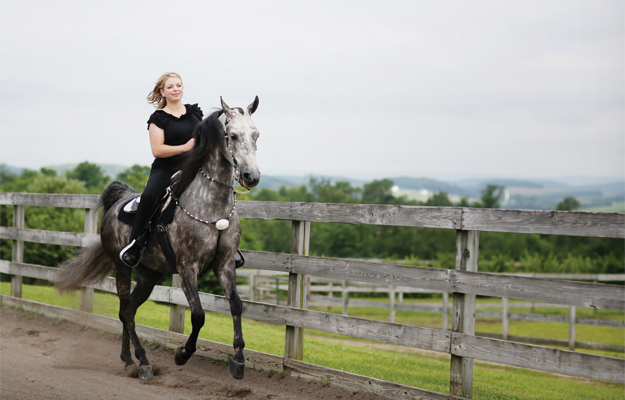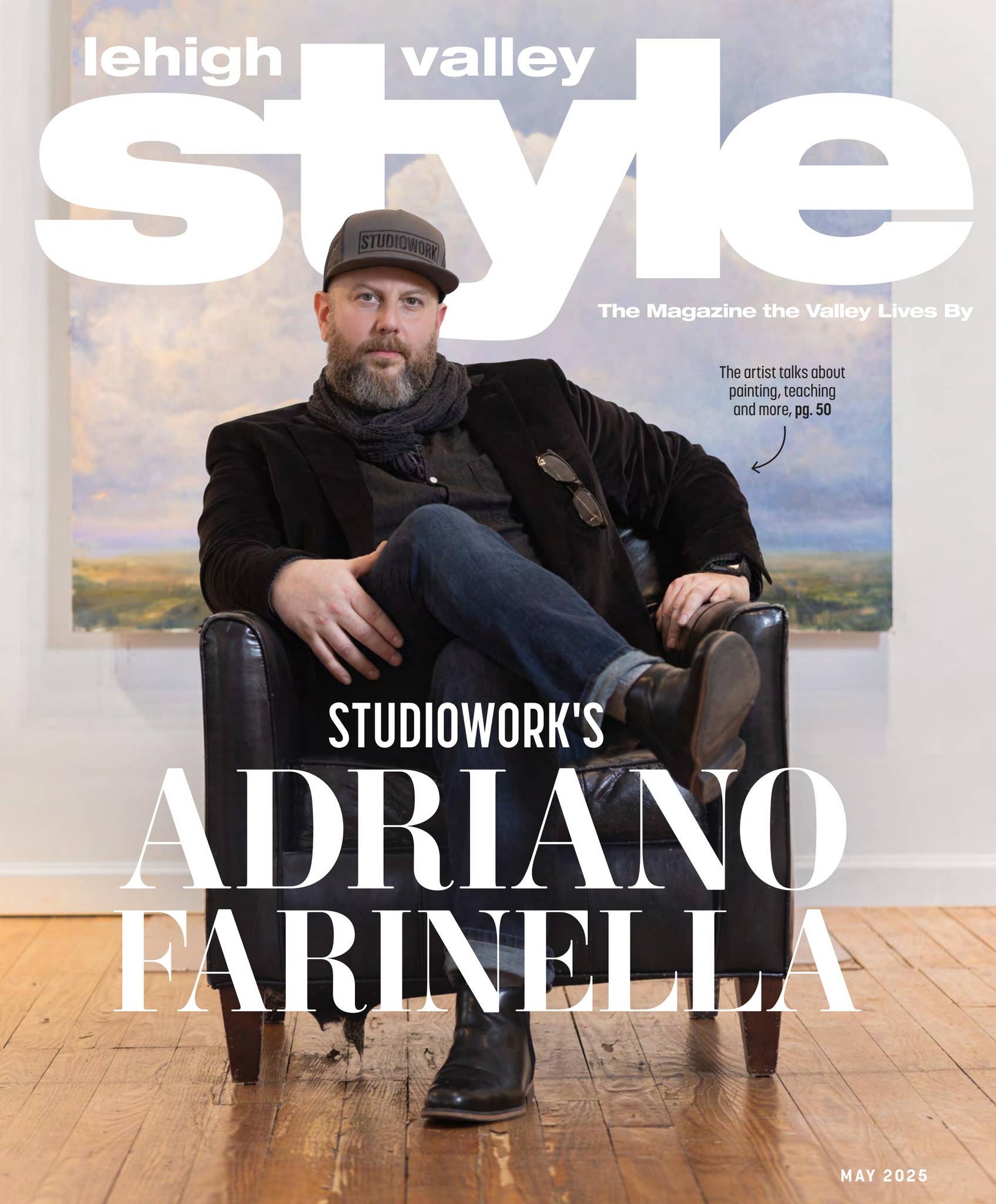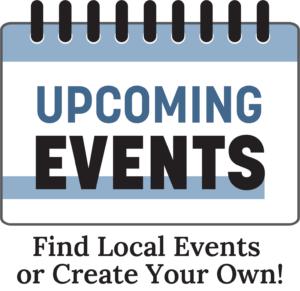
Perhaps it stems from our most primal instincts, this passion for taking to the land on horseback, wind rushing through the hair, all five senses heightened and heart pounding, hooves striking the maternal earth with near-reckless abandon.
Yes, there is something—be it not only primal—about the endeavor of riding, something romantic and timeless that has captured the imagination of countless Lehigh Valley equestrians.
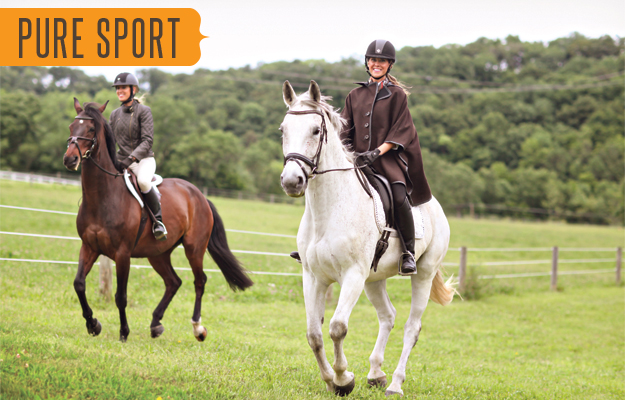
Our equestrians ride in style. Lori wears a wool and cashmere blend coffee bean-to-black reversible posh poncho with leather trim, $998, and an Ecru Signature Silk Belt-Print square, $158 from WORTH New York.
This month, serious equestrians the world over will have their eyes glued to their TV screens to witness their peers competing in the 2012 Olympic Summer Games. This year actually marks the 100th anniversary of Olympic equestrian sport and Valley residents young and old are finding their own way to enjoy this engaging sport, even if Olympic glory isn't exactly the end goal.
Sisters Lori and Lisa Flannigan certainly know a thing or two about a life devoted to riding. They board and train at Saddle Valley Farm in Bangor, helping to bring up the next generation of equestrians. While Lori, 30, has made training in the English and Western styles of riding her career, Lisa, 32, a schoolteacher, is more of a hobbyist in the sport. Her work schedule allows her to ride a couple of days a week during the school year. During the summer months she can focus on riding daily and entering competitions.
The English style of riding is an age-old Olympic equestrian sport with roots in a Renaissance training system that has changed very little through the centuries. Dressage and jumping are the two most recognized aspects of this style. Dressage is a step-by-step progression of agile, dancer-like movements, which is why it is commonly referred to as “Horse Ballet.” Jumping traces its roots back to mid-19th century France and first made its Olympic appearance at the 1912 games. Jumping has rider and horse working together to conquer fences and obstacles with a timed precision that requires just the right amount of courage from both beings.
The English style of riding is an age-old Olympic equestrian sport with roots in a Renaissance training system that has changed very little through the centuries.
The uniform of choice for the English rider is a boot with a low heel, riding breeches, gloves and a certified riding helmet. Suiting up properly is important for both rider and horse, Lori explains. “A poorly-fitted saddle could easily pinch your horse, causing an undesirable response.” As an instructor, it's also her job to make sure that each horse is in top condition to ride. “Your ride is only as good as your equine athlete,” she says.
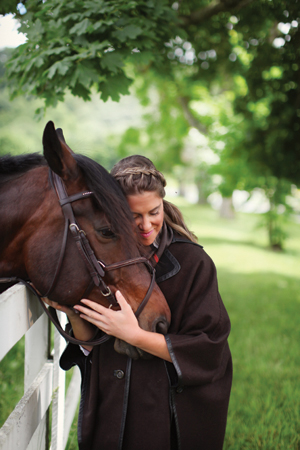
Saddle Valley Farm attracts all kinds of riders, from the hobbyist who enjoys an outing every other week, to the daily rider training for the next competition. This variety has Lori riding about six different horses on any given day, something she is no stranger to.
While some equestrians grew up with parents who provided them with the best equipment and their very own pony, the Flannigans had a different entry into the sport. Their interest in horses started when tagging along with their mother on visits to her friend's New Jersey horse farm. The friend would allow the girls to “jump on and go,” Lori says. Their fascination with horses only increased when their friend, Jennifer, allowed them to ride her horse. She made them work for the privilege of riding, and the girls willingly spent hours grooming and cleaning out stalls for the chance to ride.
This sporadic devotion to the sport continued until Lori was able to scrape up enough money to purchase her first horse, Buddy, an off-the-track Thoroughbred. She was 18 years old, working full-time and enrolled in a full load of college classes. Riding other people's horses, Lori says, has made her a better trainer because she learns how to ride each and every kind.
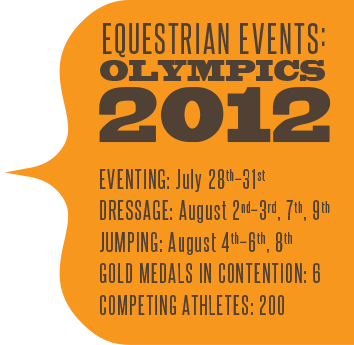
In order to be a good trainer you constantly need to train and evolve yourself, explains Lori, who works with trainers for jumping and dressage. “From the beginning, my mother wouldn't let us ride until we took lessons,” Lisa adds. “My instructors have taught me how to be safe riding and working around horses. There are just things you'd never think about if you aren't around horses regularly that I learned from my riding instructors.”
Keen concentration and staying in tune with your horse is important, the Flannigans say, and you need to “read your horse's body language and pay attention to what works and what they don't respond to,” Lisa says. Follow this and prepare to reap the benefits of a very special bond. Lori explains that Buddy is extremely attentive to her needs, taking care of her while she wore a neck brace after a car accident, and while she was pregnant with her son, Ben.
In addition to Buddy, Lori also owns Corndog, who is trained at second level dressage, Riggs, who she describes as her “hot boyfriend,” and Cookie Dough, the mini horse she purchased for her five-year-old son. “Okay, I'll admit that I always wanted a pony when I was a kid,” she jokes. Annual costs can run upwards of $6,000 per animal, Lisa says of her horse, Oswald, and that's just for the typical boarding, equipment, veterinary care and feed.
For the Flannigans and others who board and ride at Saddle Valley, it's hard to narrow down just one reason why they love riding. Some say it's the challenge both mentally and physically, some claim it's the love and admiration for their horse that keeps them saddling up each day. And some simply love the thrill of the ride. “Riding,” Lori says, “gives you the sense of flying on borrowed wings.”
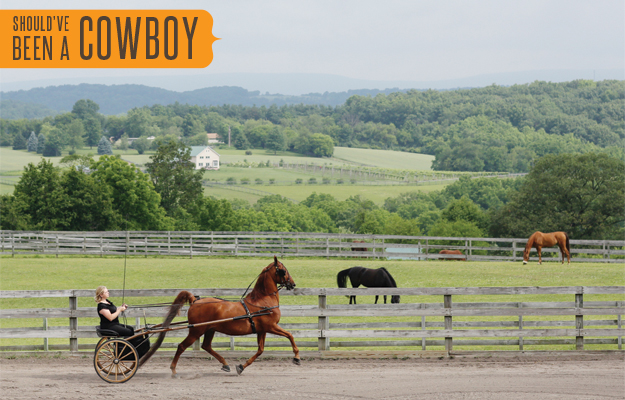
Wentz-Goosley also trains riders in the discipline of carriage driving.
While the look may be less formal, the gallop for the Western rider is no less intense.
About a good hour drive southwest of Saddle Valley Farm another picturesque landscape awaits at a somewhat higher altitude. Wentz Stables in Orefield has been training riders and boarding horses for nearly two decades.
Tara Wentz-Goosley trains in both styles and says you should never confuse Western riding as being any less formal than the English discipline. “Each style [of riding] has formal and informal aspects and different levels of intensity,” Wentz-Goosley says.
Just as English riding is characterized by a distinctive look and specific criteria for competitive events, passionate riders in the Western discipline also train very hard to show their expertise in riding and controlling the equine. The event most closely associated with Western riding is the rodeo, where aspects of utility in horsemanship are prized. These include the practice of cutting, used widely on the range to wrangle in cattle, and roping—the ability to catch a wayward animal using a lasso or lariat while on horseback. Speed, control and accuracy are key when it comes to these competitive aspects.
. . . never confuse Western riding as being any less formal than the English discipline.
Wentz Stables offers lessons, training and boarding for English, Western and Driving. (Driving relates to horses that are hitched to another method of transportation such as a carriage or sleigh.) Wentz-Goosley, a licensed equestrian judge for competition in Saddlebred and Saddle Seat Equitation by the USEF (United States Equestrian Federation), says her stable specializes in showing the American Saddlebred, Morgan and Hackney. “But we also train a variety of breeds for pleasure riding and local shows,” she adds.
As an owner of this enterprise you will typically find her in the stables every morning at 7 a.m. feeding the horses. Once that is done she's off to clean each stall and scrub and refill each water bucket. The barn is then swept and checked for cobwebs, and the arena and outdoor rings are groomed to maintain proper footing. Aisles are raked and sprinkled with water to keep dust down, and finally, boarded turnout horses are released to the pastures for the day.
Training and lessons then follow. (Wentz Stables averages 75-plus training sessions a week.) Each of the training horses is brought out and groomed before and after every workout. Horses are tacked up and then schooled by professional trainers several days throughout the week in between being ridden by their owners. This schedule helps keep the horses in good physical and mental health so that they are in prime condition and well trained to ensure a fun, exciting and safe ride (or drive) when owners come for their lessons.
The horses are fed again in the afternoon and evening and watered several times throughout the day. At the end of the day, turnout horses are brought in, the barn is swept again, the common areas are cleaned and then everyone is tucked in for the night.
Wentz-Goosley cautions that this is what occurs on a normal day. “Everything stops, though, when one of the horses has a vet emergency that needs to be attended to—at whatever time of day or night it occurs.
“Not to mention that horses don't sleep in on Christmas or any other holiday,” she adds.
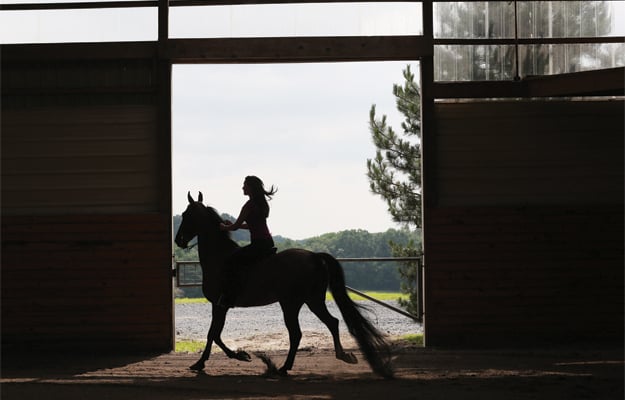
Safe in the Saddle
When it comes to training in either style, Wentz-Goosley encourages parents of potential riders to do their homework. “Educate yourself because this is a high-risk sport.”
Wentz Stables has been incorporating a specific type of instruction for early learners for many years and says the practice has been highly successful for them.
“We don't believe in taking a young child and just plopping them onto a saddle for their first experiences without strict controls.”
The novice rider will learn to do their first trots and posts in this secure environment so they gain confidence and a feel for the horse's natural movements beneath them.
Wentz-Goosley says they start with a series of “lining lessons” where the horse's bridle is secured to a series of long reins controlled by an instructor from the center of the riding ring. The novice rider will learn to do their first trots and posts in this secure environment so they gain confidence and a feel for the horse's natural movements beneath them. Only after the fundamentals are mastered will the novice pursue the English or Western style of riding.
It's important for the horse not to be upset by sensing a new and less-than-confident rider in the saddle, Wentz-Goosley says. This, she adds, will provide for a more satisfactory and expedient riding experience down the line.
“Eventually, [the rider] will be able to do so much more, so much faster.”
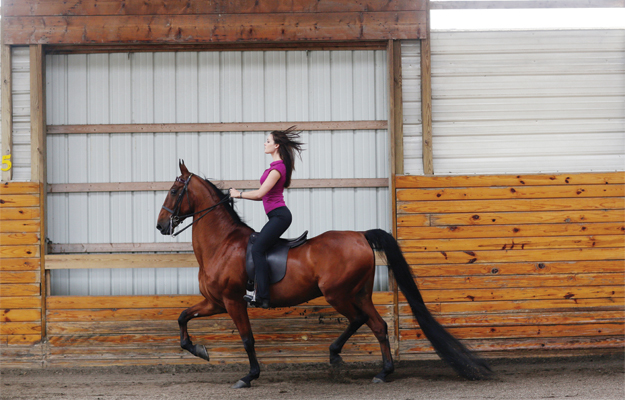
With her feet firmly planted in the stirrups, Jessica Augustine of Whitehall practices her posting technique.
Of a Different Breed
Any parent who has fielded a child's plea for a pony should also exercise good judgment when it comes to choosing a breed. The local equestrian experts we spoke to all have their favorites and specific reasons for them. The two most popular breeds among them were: the Thoroughbred for its stamina and the American Saddlebred for the most comfortable riding experience.
Other breeds mentioned include the Oldenburg and Dutch Warmblood, and the Arabian and Half Arabian.
“Warmbloods are tall sport horses with excellent gaits and beautiful conformation of their topline and large muscular necks,” says Wenda Boyer of Emmaus. Boyer, who owns horses and boards them at Molasses Creek Farm in Northampton, adds Warmbloods are well known for their suitability for the riding disciplines of dressage, and hunting and jumping.
For Kelly Burland of Quakertown the Arabian horse stands tall. “Arabians have wonderful heart and are very personable,” she says. “I have been breeding and showing Arabians most of my life and love watching them grow up, and enter the show ring for the first time.” Burland, whose family owns Travelda Farm in Quakertown, Upper Bucks County, says she also likes Hanoverians for their athletic ability and trainability.
“Some of my favorite horses at the farm are Hanoverians,” she adds.
Education and thorough research are also required, Wentz-Goosley says, when looking for a facility to board and train with your cherished friend.
“Trust your instincts and use common sense. Check to see if the horses are healthy-looking and watch lessons being taught,” she says, when evaluating a boarding and training facility.
You should find out how long the facility has been in business and the levels of experience the instructors possess.
“Look to see that the farm is well cared for and if the pastures are in good shape,” she adds.
Truly the life of a genuine equestrian is one of hard work, challenge and reward. This was most evident in the response Boyer provided about what this lifestyle does for her.
“Being involved in the horse world has broadened my network of friends—just hanging out at the barn and interacting with fellow horse friends is fulfilling, educational and inspiring. The horse world creates an instant common bond, and overcomes societal, cultural and economic differences among horse lovers,” Boyer says.
“My favorite time of day is when I walk into the barn, breathe deeply and take in the warm, pleasant scent of Opie and Bellagio—my two beautiful equines and best friends.”
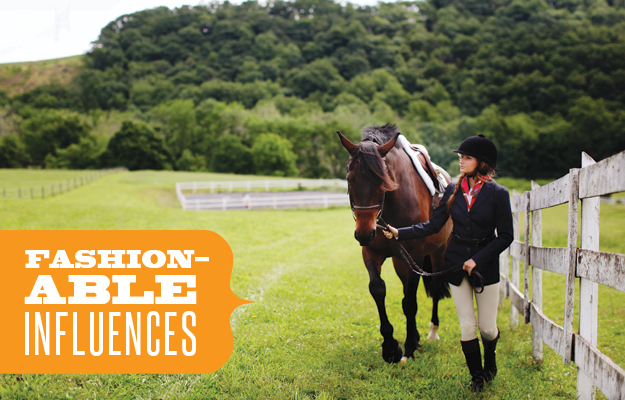
New Navy Tech blazer, $598, Black Hair Calf Buckle cummerbund belt, $398, Baltic signature silk belt print square, $158, all from WORTH New York; Kerrits Tan Microcord Knee Patch breech, $89.95; The Rider riding helmet in black by Charles Owen, $140; York Tall Boot in black/brown by Ariat, $229; all available at Chaar Saddlery, Allentown.
BY DANIELLE BENNICOFF
Equestrian-inspired fashion looks on this year's fall runways are nothing new—in fact, they have been making regular reappearances since the 1940s and 50s when women began sporting riding wear both in and out of the saddle. This trend gained further momentum in the 1960s when First Lady Jacqueline Bouvier Kennedy, one of America's most influential fashion icons and an accomplished rider in her own regard, helped propel the look from the riding stable to Fifth Avenue.
Today's riding-inspired fashion has progressed leaps and bounds from its early incarnation and is now making appearances on the runways from waist-cinching harness-style belts to tailored prepster jackets, and of course, the signature flat-heeled, knee-high leather boots.
While there are several designers that come to mind when we think of prêt-à-porter in this regard, Ralph Lauren is by far the most widely recognized label to fully embrace the equestrian lifestyle and reflect it in fashion. Since the brand's origination 40 years ago, Ralph Lauren has put a spotlight on the sport of polo and has become synonymous with the appearance of jodhpurs, or riding breeches, in advertising spreads and department stores nationwide. For English-style horseback riders, jodhpurs are used as the main riding pant, made of stretchy fabric with leather or suede reinforcing around the knees, thighs and seat. In the fashion world, some jodhpur styles take a very literal interpretation, as others might only mimic the double-snap closure at the waistline and the popular fawn color. Either way, these skinny, tapered pants serve as the foundation for some very classic ensembles.
Hermès is one of the most significant designers for turning equestrian fashion accessories into timeless classics.
The English show jacket, with its selection of cuts and styles (depending on riding discipline) is also a fashionable staple. Many designers from Burberry to WORTH New York have taken this classically tailored jacket and revamped it for mainstream wear, so it is now seen on those who are more likely to be found entering a shopping mall rather than a show ring. This piece has been restructured to a less formal cut, shorter in length and made of lighter-weight material, manufactured in a variety of colors not necessarily sticking to the traditional black, navy or red worn by competing riders. It's also common to see these jackets constructed of tweed or wool as outerwear during the winter months. Leather or suede elbow patches are often added to ensure the true look of an equestrian.
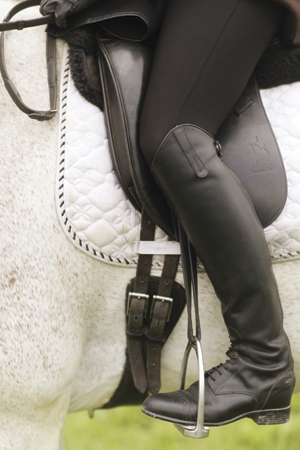
By far the most popular and widely worn item of this genre has to be the flat-heeled, knee-high shaft boot (lest we forget Karl Lagerfeld strutting his stuff on Chanel's runways donning black boots and a riding crop?). A tall black or brown English riding boot is sophisticated, comfortable and polished enough to pull off with a skinny jodhpur-style pant, jeans or skirt. Brands like Frye, Ugg and Coach (whose logo, after all, is a horse and carriage) have all taken a cue from riders. While riders' boots were originally constructed to be rigid in structure, only to be worn-in and pliable around the ankle over time through consistent use, fashion boot styles are thankfully more forgiving. With a true English riding boot having a heel no more than one inch in height, soles are flat and often made of rubber. Toes will either be rounded or squared off, depending on the discipline. These styles are used in non-riding boots, but with little regard to strict details such as heel height, toe shape, and whether there are laces or not (which are traditionally only at the front of the ankle).
Keeping with the Western riding style, cowboy boots are also a perennial favorite, worn by those who seek a casual look (with a bit of a rocker edge). Detailed stitching and quality leather or exotic snakeskin construction make this boot a little flashier than the demure English riding boot options. Another transitional boot has to be the Hunter Wellie. Many equestrians keep a pair of these practical boots on hand because they are durable enough to withstand years of barn labor. These days, Hunters have amassed a cult-like following among fashionistas, worn around town in rainstorms in both the traditional neutral colors and the trendy bright hues that are a far cry from the original Hunters made in 1856.
While flashy add-ons are banned from being worn in the show ring during competitions (mainly for safety and traditional reasons), accessories with an equestrian flair are favored out of the ring. Hermès' is one of the most significant designers for turning equestrian fashion accessories into timeless classics. The roots of this venerable design house date back to Paris, 1837, and Thierry Hermès fine leather harness and saddlery shop. It is from this storied tradition of expert leather stitching that we have the exquisite leather handbag Hermès creates today. The Hermès printed silk scarf has also become a must-have wardrobe staple—an investment piece not only worn for years, but passed down to generations. It's a trademark of sophistication with its iconic patterns of riding tack—reins, bridles, bits and chains. These scarves are most commonly found in subdued, neutral colors with punchy gold and orange accents, but recently brighter colors have been making an appearance. The print has become so popular that it has even been used to create a line of dresses for the Hermès fall collection.
Story Details:
Hair Stylist – Hughann Michaels of The Salon, AllentownMakeup Artist – Nehemias Nunez of The Salon, AllentownModel – Christie JonesFor purchasing information for WORTH New York fashions, please contact Renee Vostinak at rvostinak@worthcollection.com. Visit WORTH online at worthny.com.Chaar Saddlery is located at 1635 Airport Rd., Allentown; 610.437.9978. Visit Chaar online at chaar.us.


